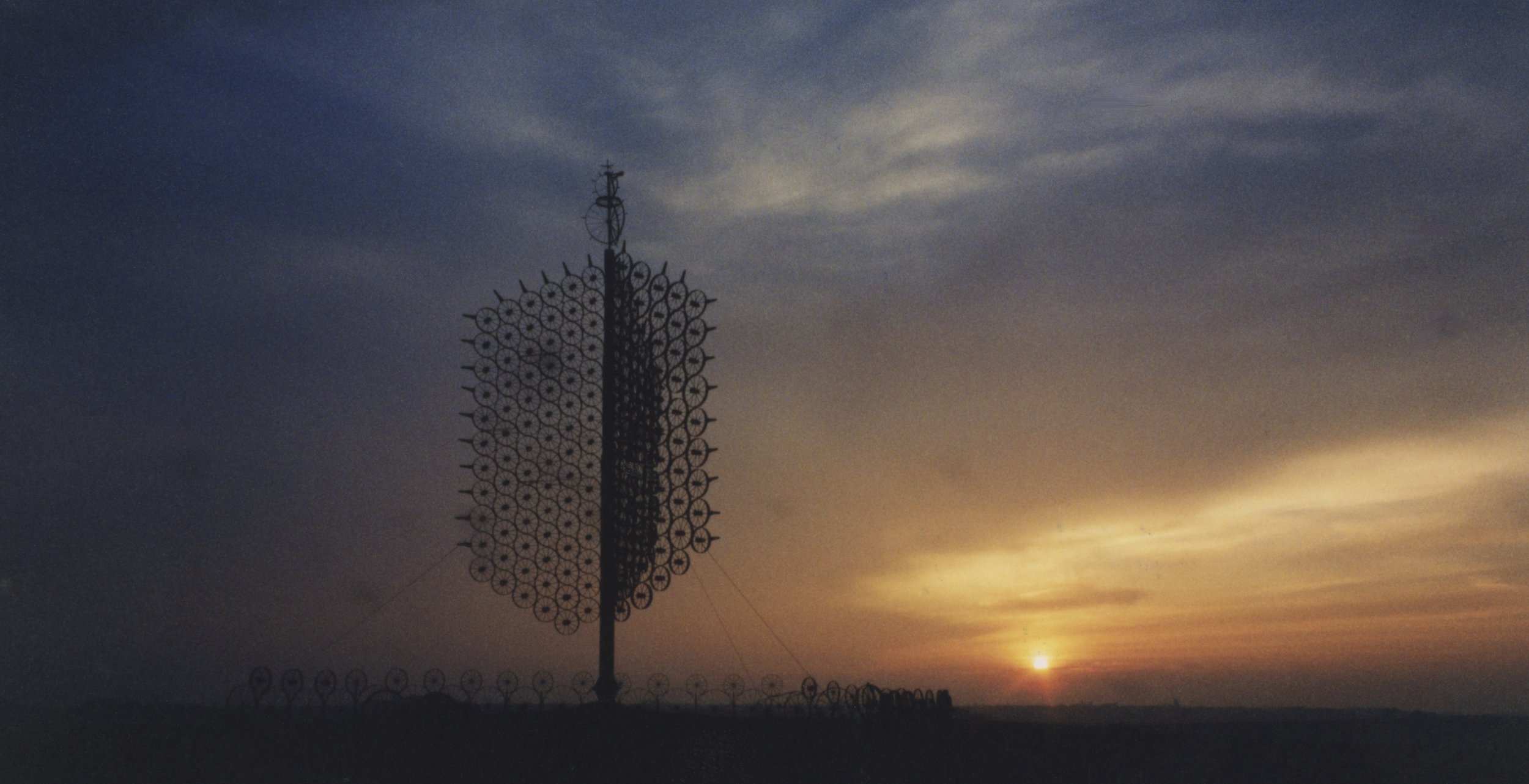Art lives in all of us
When I was younger, I set out on an approximately 10 month, 5,500-kilometer solo walk across America. The purpose was clear: to find some kind of meaning, to discover my purpose, and to understand what it really means to live a full, authentic life.
The journey led me through forests, across plains, and into small towns that I never would’ve expected to visit. And along the way, I found moments of beauty, strange art, and unexpected encounters that shaped my thinking in ways I couldn’t have anticipated.
One of those moments took place in Sully, Iowa, off Exit 179 from I-80, just a short way south of the highway. There, nestled in the middle of a vast cornfield, was something that caught my eye—a towering structure, made from over 200 large wagon wheels welded together. Standing 60 feet tall, it immediately took on a presence that felt like something much greater than the sum of its parts.
This was Leonard J. Maasdam’s wheel tower, a roadside sculpture built by Maasdam at the age of 90. A lifelong tinkerer, Maasdam had spent years collecting old wagon wheels from local farms. In 1994, he began welding them together, creating a giant, geometric sculpture that would become a striking landmark for anyone passing through this corner of Iowa. And although the structure’s raw, industrial feel could have been mistaken for a display of mechanical engineering, what struck me most was its undeniable beauty.
Maasdam didn’t attend art school. In fact, he wasn’t even a very good welder. That part of the story is passed down by his family—his kids would sneak out at night and re-weld his work when he wasn’t looking. Maasdam didn’t know they were fixing his mistakes. They never told him.
The result was a captivating sculpture that, despite its humble and makeshift origins, felt like a work of genuine artistry. The repetition of shapes, the careful placement of each wheel, were all more than just an accident—they felt intentional, alive with energy. What Maasdam built was more than just a welded structure; it was a testament to the power of intuition, instinct, and the human drive to create.
This realization stood out to me because, as I walked across the country, I thought a lot about what it means to be an artist, to create, to live an authentic life. Standing beneath Maasdam’s towering creation, I couldn’t help but think: There’s something in all of us capable of creating work that moves people, something that doesn’t require fancy degrees or years of training. Art can be born of the simplest human instincts—the desire to make, to express, to understand the world in our own way. For Maasdam, it was about welding together the scraps of everyday life and turning them into something beautiful. That’s not something taught in a classroom. It’s something that lives inside of us all.
And yet, despite society’s love of art, there’s still a disconnection between the public and the art world. Museums and galleries often feel like exclusive spaces—places that are hard to access, even harder to understand. But art shouldn’t feel out of reach. Art is a universal language, meant to be experienced by everyone, not just those with formal training. Like Maasdam’s wheel tower, art should feel open, inviting, accessible. It should be about the joy of creation, the raw emotion of expression, rather than the cold, distant analysis of technique.
The best art institutions—those that understand the true spirit of creativity—are the ones that recognize the power of universal expression. They don’t just showcase the works of trained professionals; they make space for people to experience and connect with art in a way that feels personal, authentic, and above all, human.
In the end, the wheel tower wasn’t just a monument to one man’s artistic vision. It was a symbol of how art, in its purest form, belongs to all of us. And just as Maasdam’s intuition guided his work, we all have the ability to follow our own instincts and contribute to the ongoing conversation about what it means to be human.
Leonard J. Maasdam’s legacy is far more than a roadside attraction—it’s an invitation for us all to embrace our creative potential. And that, to me, is the true power of art.
To read other Insightful Path posts on art, why not check out these?




